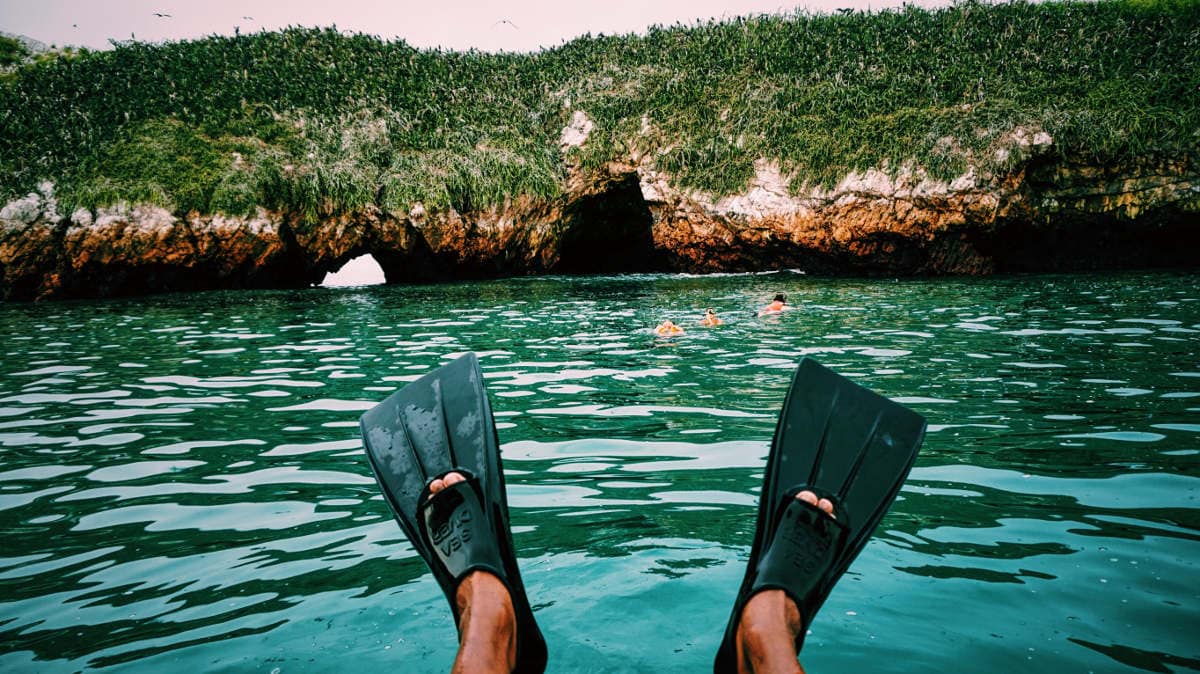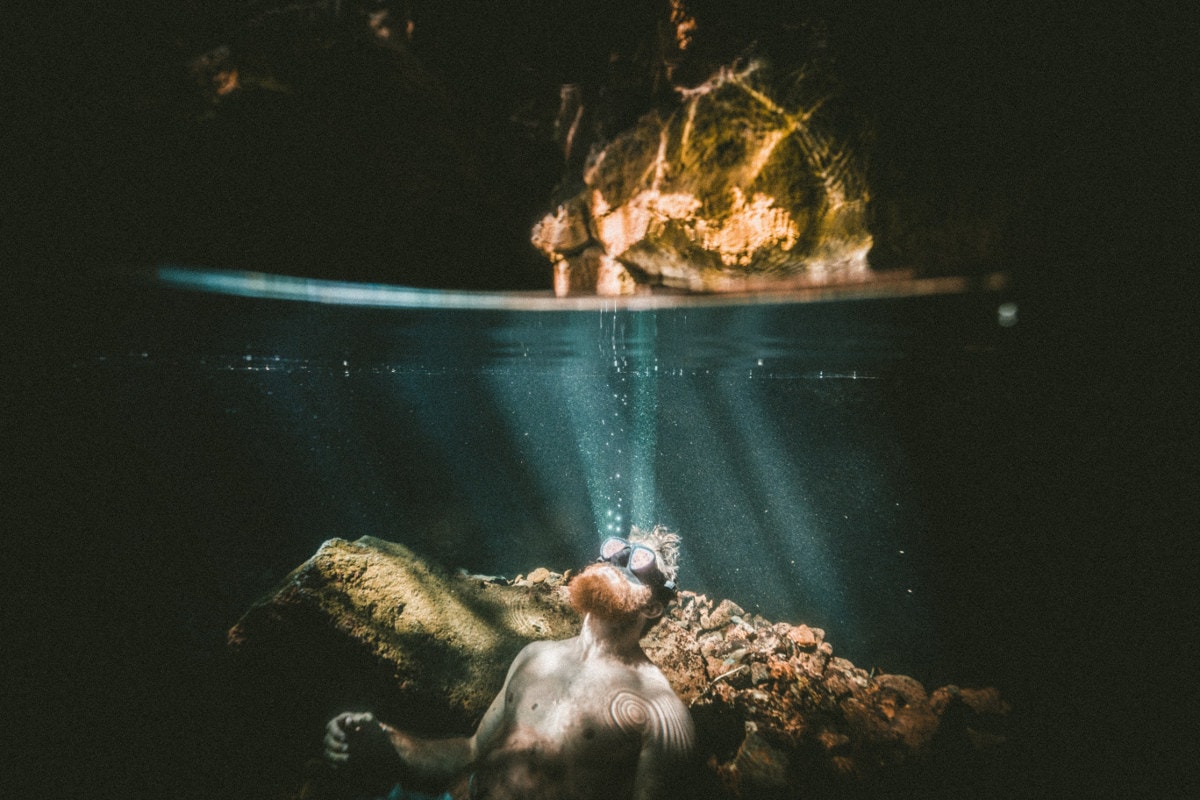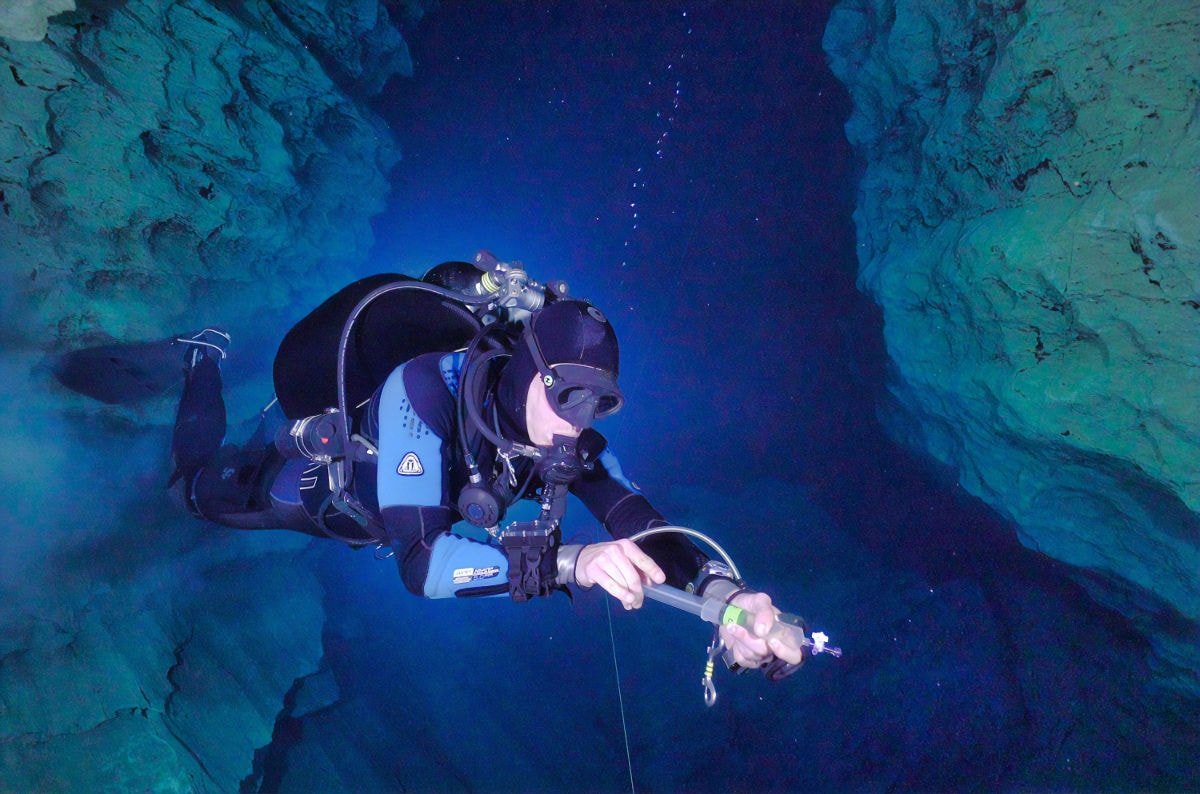what it is about
Cave diving is a diving specialisation for adventurous divers and for those who like to dive abroad. It is characterised by generally offering very clear waters and charming rock formations, in addition to having special flora and fauna.
In this specialisation the diver learns to explore underwater caves responsibly, and is, as opossed to coasteering, not a specialisation for the beginner diver due to reduced visibility, low light and having to navigate through complex passages. All this requires a lot of experience and good preparation.
Before moving on to the “dark side of diving” (as this type of dive is commonly known), keep in mind that cave diving requires gradual learning. At least one certification of Advanced Open Water is required, and in some organisations you can only follow this specialty if you already have the Masters diving certificate (3 stars). In addition, some organisations will even require a minimum number of dives and/or that you hold another specialisation such as diving with Nitrox (breathable gaseous mixture of oxygen and nitrogen used in technical and recreational diving).
Due to the prerequisites that are requested before performing this sport (which normally depend on the intensity and level of the course), there is a distinction between “cave diving” and “cavern diving”. In cavern diving they do not go beyond the area of natural light and no more than 60 meters approx. (combined in terms of depth and distance).
where to start
Once we have obtained the necessary certifications and we feel fully comfortable and safe under the sea we will begin to make short dives in small caves where we will not lose sight of the entrance at any time.
During these dives we must learn the basic elements and ways of acting in this type of spaces accompanied by an expert guide. Some key aspects are: gas planning, maximum depth, adequate lighting, route marking and need for specific training.
As we have said before, it is best to start in this world accompanied by a good instructor, and for this it is advisable to contact other people before and learn firsthand how the experience was.
Do not be afraid to tell the instructor if you are not completely comfortable and your insecurities, you have to progress gradually and above all keep in mind that you can leave the dive at any time.
Each level of training increases the possibility of experiencing anxiety for the diver, who should gradually gain experience before continuing to progress.

Basic Qualities and necessary equipmente
First of all it should be noted that this type of diving is physically demanding, so it is highly recommended to be in good physical condition. This is also a key factor in reducing the risk of decompression sickness. Therefore it is advisable to perform an aerobic exercise two or three times a week regularly.
On a technical level, these types of dives are also very demanding. Any extra training we have will be of great help, in addition to recent and ongoing experience. Therefore it is recommended to have made at least ten or twelve dives in the last six months if you are going to make a new dive of this type.
Finally, it is essential to perfectly control buoyancy techniques in confined or open water and be able to make a complete turn simply by paddling with the fins.
Equipment necessary for cave diving
As for the necessary equipment, it is important to carry the smallest possible hanging material, the minimum weight and in the smallest volume. Some of the factors to consider are:
- Suit. We will opt for a full body suit no less than 5mm thick, which guarantees sufficient thermal protection for the area where the immersion takes place. For this we will also consider the expected duration.
- Vest and regulator. There are specific models much simpler and lighter to avoid tangles and hooks for extra lighting elements, etc.
- Fins. We will use adjustable single blade fins, since other types can cause entanglements with the guide wire. We will opt for a simple but powerful model with simple adjustment elements also to avoid entanglements.
- Light torch. This item is probably the least secure of all the equipment. Therefore, two safety torches must be carried in addition to the main one with theirs corresponding additional batteries. It is also mportant that they do not have laces and that they are easy to place in the vest when we need both hands free.
- Knife. We will opt for a small one, easy to transport and that has a cable cutter.
- Mask and guide. It is extremely important to always use a guide line (preferably Nylon and white for better visibility) from the cave entrance during the entire dive, and a reel to prevent the line from getting entangled in the water and allows it to be collected on the way back

Why practice cave diving
Flapping down a little traveled path is part of the attraction but there are other reasons why we practice cave exploration.
Without sunlight to keep bacteria alive and without water movement to sustain suspended particles, visibility can reach incredible distances (more than 60m). With a huge camera you can see at all time a couple of divers in the distance and their lights. The water is so crystal clear that it is literally invisible, as if you were in space.
Some caves look like the surface of the moon, pale white limestone with strange and spectacular shapes. In others the water moves quickly and the divers swim along the current entering the cave. If the route is long enough, they fly along it, swimming in favor of the current.
In addition there is a lot of variety of walls in the caves. Some are white, others dark that absorb the light of the torch, and others have bands or lines due to the changes of seasons, allowing entry into the cave. As they are mostly composed of limestone, many caves have embedded fossils.
It is also interesting to explore the strange animals that live in them. These have adapted to the environment for thousands of years, lack pigmentation and are pale white; many are blind and have longer antennae to detect their food in complete darkness.
Just as open water divers incorporate knowledge over time, so do cave divers. Conversations before and after diving are as lively as those of divers in open water.
In summary, cave diving in Mallorca offers the opportunity to visit unique environments of permanent adventure. And to be part of a group that shares the same passion.





